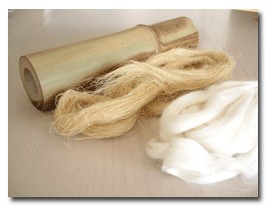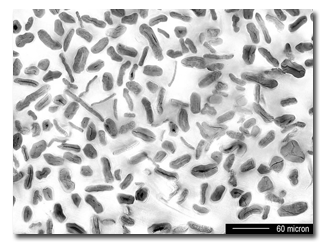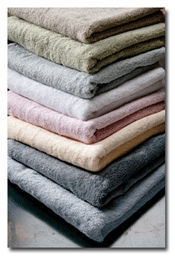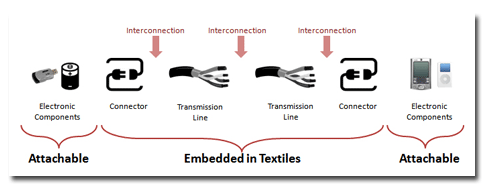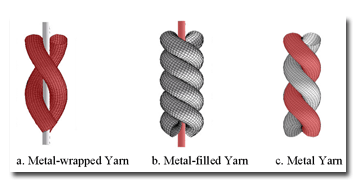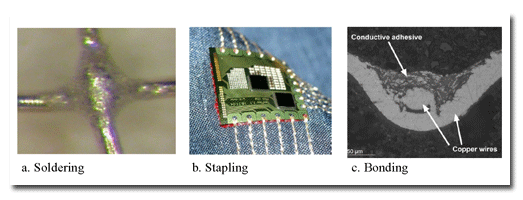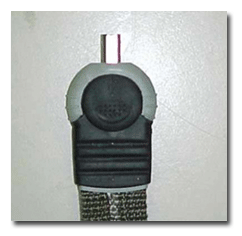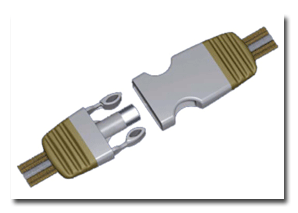Editor’s Note: Following is a review of the Southern Textile Association’s (STA’s) Winter
Technical Conference — held January 13 at the Textile Technology Center, Gaston College East
Campus, Belmont, N.C., provided to
Textile World courtesy of STA.
BELMONT, NC — As Ken Leahy of Duke Energy stood at the podium and gazed at more than 100
sets of eyes that have witnessed much of the textile industry’s modern-day metamorphosis, he began
his presentation with a profundity.
“I feel like I’m speaking to the survivors of the Titanic, in a way,” said Leahy, managing
director of Climate Change Policy for the Charlotte, N.C.-based energy provider. “I mean, you guys
are the ones left of an industry that I know is extremely important and really the driver of this
region.
“So my presumption is you are the most nimble and the smartest and the ones who have found a
way to survive in this economy,” he added. “And I have a lot of respect for that.”
Indeed, those on hand for the Southern Textile Association’s Winter Technical Seminar can
tell you what it feels like to hit a virtual iceberg — more than one, actually — and live to tell
about it.
And coming together, all hands on deck, for an event such as this provided a tremendous
opportunity to learn better, smarter ways to navigate rough waters in a new decade that promises
further obstructions.
The seminar offered something for everyone — those seeking business opportunities with the
military, those looking for ways to improve their supply chains, those in need of information to
help them wade through coming climate change regulations, those pursuing potential partnerships
with high-tech performance fiber producers and those trying to gain expert insights on the economy.
They came to learn, commiserate, strategize, network — and persevere.
And they couldn’t ask for a better organizer than the STA, which has played a huge role in
helping its members and this industry weather many a storm during the past 102 years.
Also, it was only fitting that the half-day meeting was introduced by a member of another
time-tested textile industry institution, 121-year-old Greenwood Mills of Greenwood, S.C. STA
President Jay Self III, the company’s president and COO, promised an informative program, and
presenters did not disappoint.
Eyes On The Military
One of the domestic textile industry’s better opportunities for partnerships is with the U.S.
military, but pursuing, pinpointing, persuading and procuring a contract is more often than not an
onerous process. That’s why Greensboro, N.C.-based TNC Inc., in conjunction with the North Carolina
Department of Commerce, hosted a military conference for performance textile producers and
suppliers in November.
That event was such a success — with 180 attendees and many more turned away — that STA
Winter Technical Seminar Chairman Brad Burnett and his planning committee asked representatives of
TNC to provide a recap of the conference at this meeting. Jorman Fields, president of TNC and
managing director of International Market Solutions (IMS), gave Jim Leonard III the honors and
introduced him.
Leonard, an IMS consultant specializing in international trade issues, is a former deputy
assistant secretary of textiles, apparel and consumer goods industry in the U.S. Department of
Commerce.
“About two years ago I was invited to a meeting at NC State’s College of Textiles, where the
focus was on dealing with the military,” said Leonard, a former long-time executive with Burlington
Industries. “A number of folks there said, ‘I have a product that I think will have military
applications, but I don’t know who to talk to. I don’t know anyone in government or the Department
of Defense.”
Thus was born the idea for such a conference, so Leonard and Fields’ group decided to host a
focused event that would connect the industry with military contacts. With the first military
conference attracting more than 100 people, they organized another in November, which Leonard
rehashed to STA members.
Leonard mentioned the wide-ranging roster of speakers before calling the event “overly
successful.”
“Actually, we had too many speakers,” he said. “We had to cut down some speakers’ talks.
Afterward, we had a critique sheet and the only negative comments we received were things like we
ran out of coffee or the room was too cold. If those are the negative comments you get, then you’re
pretty pleased.”
He added that some companies informed him that they were likely to earn military contracts
based on contacts made and insights gained at the session.
Respondents unanimously said they would be interested in a follow-up event, so Leonard said
another is in the works.
“It may take the form of a workshop or it may be a half-day workshop and half-day ‘35,000
feet’ program,” he said.
He asked attendees at the STA conference for any ideas they would have for the program or
format.
Contact information and presentations are available at
www.internationalmarketsolutions.com,
Leonard said in conclusion.
Supply Chain Optimization
The next speaker was deemed a “supply chain wizard” by STA Chairman Jim Booterbaugh of
National Spinning Co., Washington, N.C., as he introduced him. And Dr. Bill Kernodle lived up to
that billing during his presentation, “Lean Tracking and Scheduling Software.”
Kernodle, former site director of Clemson Apparel Research (CAR) at Clemson University, in
2007 formed a spinoff supply chain company based on developments made over 15 years at the
university. He remains part-time with Clemson and is full-time with Balance Flow SC Solutions LLC.
“When we started working on this project 15 years ago at Clemson, we were challenged to go
find what is missing in the areas of manufacturing and the areas of supply chain,” he said. “Don’t
go improve something that’s already available and just tweak it, but go find what’s missing — and
we believe we did. And we are convinced of this as we implement it in companies today.”
Kernodle went in-depth on his company’s techniques for mapping a supply chain with software
that was originally developed for the military. It is now used by a number of companies to track
internal raw material systems.
“Over 75 percent of all U.S. manufacturers say they are doing something in the area of Lean
(Manufacturing),” he said. “But there’s an absolute void in synchronizing what moves. We want to
synchronize and release what’s needed right now and move it quickly to get to the consumer.”
How does the software achieve this? First, by mapping the supply chain, Kernodle said.
“For example, a supply chain section might be the dyer and finisher, and we have learned that
when we approach a supply chain in this manner, the same common sense replenishment practices and
the algorithms that support them work for any supply chain, for any product and anywhere in the
supply chain,” he said. “So these are the building blocks we’ve designed to manage a supply chain.”
Kernodle and his team have determined that the critical operational metrics in mapping the
supply chain are to maintain balance in days of supply in products across the entire chain, he
said. Simultaneously, the fastest throughput is a goal, with throughput defined as the rate at
which money invested in raw materials is turned into revenue.
“Our vision is to make, move and order supply-chain wide one day of supply every day,” he
said. “And, in doing this, take care of the items in shortest supply first, from where we stand in
the supply chain to the end of the supply chain while maintaining balance in days of supply.
“Will we get there? No, but that’s the vision. We want to get as close as we can. What’s
going to limit this? Change overcosts in manufacturing and shipping. There may be other limitations
when we start, but eventually we’ll get there.”
Kernodle spent the next few minutes delving into the details of the process of optimizing
supply chains.
“We have found in analyzing over 150 supply chains in the last 10 or 12 years that they all
look alike, it doesn’t matter if you’re weaving it, sewing it, welding it, bolting it or cooking it
— doesn’t matter,” he said while peeling back the onion of the synchronization steps. “When we
work on moving product through, the physics are exactly the same. And we have found that where
there’s a little bit of complexity in the number of stock-keeping units (SKUs) and number of
players, all supply chains perform miserably and to the same degree.”
He later noted that while plenty of companies have implemented Lean Manufacturing techniques,
though expensive, very few Lean efforts — less than 10 percent — are deemed successful after
three years, Kernodle said. But SC Solutions’ system is a “common-sense solution,” he added.
Technically, he continued, root cause problems exist in all supply chains — local
optimization; large-order, make and move batches; bottlenecks and constraints; forecast error;
SKU-level optimization; and bad product and data quality.”
There may be others in a particular supply chain, but these are common in all supply chains,”
he said. “And we have built in the solution to take on all of these through our software.”
But the real problem, the core problem, is leadership, Kernodle said.
“It’s the lack of knowledge of what can be different and then it’s the change management
determination and skills to make it happen,” he said.
In conclusion, Kernodle admitted that he “dumped a lot of technical information on you very
quickly.”
“But it’s grounded in common sense at the top to do something that is very, very different
from the way people are doing it today to get very, very different results,” he said. “It’s a lot
of fun and it’s exciting.”
A Look At Pending
Climate Change Legislation
In opening his presentation on climate change legislation and its potential impacts, Duke
Energy’s Leahy informed the group that his company is a founding member of United States Climate
Action Partnership (USCAP), which consists of a group of business and environmental organizations
that have come together to call on the federal government to quickly enact strong national
legislation to require significant reductions of greenhouse gas emissions.
Which may seem contradictory to a company that counts among its customers manufacturing
companies already burdened by strict regulation.
Leahy explained Duke’s involvement with the organization in colorful terms.
“We’ve been accused of being in an alliance between bootleggers and Baptists,” he said. “We
have some folks in this group who really are threatened by this thing called climate change and
they got involved because they wanted to make sure that it didn’t mess things up too badly.
“And we’ve been working together with some of these organizations for about three-and-a-half
years now to try to figure out how, if this is going to happen, we do it in a way that this economy
will still work.”
As a USCAP member, Duke’s objectives are vast, he said, and include such bullet points as
resolving regulatory risks, preventing intrusive command and control policies, containing costs,
advancing technology and minimizing the competitive threat to domestic manufacturers.
Before delving into the meat of his presentation, Leahy offered a disclaimer because “anytime
I talk to an audience, our lawyers get really nervous. They say ‘tell them you’re not speaking for
Duke Energy, you’re talking for yourself.’ ”
So with that condition understood, Leahy was off.
“Climate regulation is coming at us, and it’s not going to be good, in my opinion,” he said.
He explained the Environmental Protection Agency (EPA) is moving fast to get climate change
legislation passed, particularly after the Supreme Court ruled in 2007 (Massachusetts v. EPA) that
greenhouse gases fit within the Clean Air Act (CAA) definition of air pollutants. Leahy called the
CAA a “very blunt, inefficient instrument that doesn’t work for climate.”
With the ruling, the EPA must assume legislative power to amend the act — or
createadministrative chaos. A federal judge warned the EPA against such action last summer, he
added.
The EPA solution calls for legislation to be phased in over time and tailored so it covers
only large sources such as brick makers, pulp and paper mills, small coal mines, Leahy said. That
would leave a lot of smaller and medium-sized sources out of the picture — for now. But he pointed
out that those would be covered and regulated in the future.
The risk with the Clean Air Act is, if you pass the threshold for allowable greenhouse
gasemissions, you must apply for a Prevention of Significant Deterioration (PSD) Air Quality
Permit, Leahy said.
“So what happens if you happen to see this threshold now or if you anticipate it?” he asked.
“Before you make any change to your facility you have to apply for an air permit before you put the
first shovel on the ground. You have to show that you’re using the best control technology
available. Nobody knows what that is for carbon right now.
“It could take months or years sometimes to get the permit. As part of the permit application
they have to open this up for public comment. So this is when every Tom, Dick and Harry can come
out and say why you should or should not get your permit. And sometimes they’ve decided they’re
going to have open hearings. So this is not fun stuff.”
Leahy described the scenario as “welcome back, Carter,” referring to the 1970s when
austerity, conservation, mandates, subsidies and CAFÉ standards were typical during the energy
crisis.
“It’s old-style command and control,” he said. “We’re punishing the guilty and, incidentally,
you’re all guilty. [They’re saying] ‘we don’t trust the market and we’d rather have government
mandates.’
“Now, the clock is ticking on this,” he added. We’ve got the Clean Air Act and it’s going to
hit in June, at which point Duke Energy is under it immediately. We’re past that 25,000-ton
threshold by running a gas turbine for just a few days. But the risk window for everybody else
opens up wide at that point.”
Leahy pointed out that he advocates for solutions such as those made by President Reagan. Cap
and trade-type legislation — which was opposed by environmentalists at the time, he said — was
developed during the Reagan Administration and was applied to phase out ozone-depleting chemicals
such as lead in gasoline.
Because businesses know their operations better than bureaucrats and are allowed to make
reductions where they can get them the easiest and cheapest, measures like these work with the
market, not against it, he added. And it unleashes innovation and continuous incentive, he noted.
Current legislative proposals are beset with problems, and climate change policies must
incorporate a number of attributes to be successful, Leahy said. Among them: they must protect
consumers, be economy-wide in scope, include effective cost-containment measures, provide a fair
allocation of allowances, advance technological development, advance nuclear production, wall off
the EPA and litigation, and accelerate energy independence.”
The objective of this whole game is to keep the energy crisis within the normal volatility
range and grow slowly over time,” Leahy said.
A problem with the legislation now is that it’s being driven by only one side of the aisle
and it should not advance further in that direction, he said. As such, a bipartisan bill is needed,
he added.
“Anytime you have a contentious bill, something that’s not going to pass very easily, at
least in this Congress, that means you’re going to have a thick bill,” he said. “Every vote they
get equals another 50 or 100 pages.
“So we need to have a bipartisan approach,” he continued. “And I’m not kidding myself. I
don’t think either side is going to sing Kum Ba Ya and step across and work with the other side.
But we need some folks from the other side of the aisle who are willing to go in there and say ‘we
are going to fix this and we are not going to have this, this and this.'”
Leahy went on to discuss various alternative energy options and the potential economic impact
of climate legislation — then closed with an apology for “annoying you tremendously today.”
Repreve® — The Recycled Brand
Other presentations were made by representatives of high-performance fiber producers,
starting with Terry Turner, product development manager for Unifi, Inc., Greensboro. He discussed
the company’s Repreve® brand of recycled fiber.
Two issues surrounding recycled fiber are transparency and global availability, he said.
Transparency means basically that the fiber indeed matches its claim. Throughout the entire
supply chain and with independent certification, Unifi and outside certifiers monitor the fiber
from raw material to end product to verify its recycled assertions, Turner said.
“The Federal Trade Commission (FTC) does have some things to say about recycled claims and
we’re trying to follow the FTC rules to the letter,” he said. “To say that it has recycled content
means that it has to be made from materials recovered or separated from the trash.”
In addition, Unifi does fabric certifications downstream to make sure those claiming to have
products containing Repreve indeed do, he said.
“And you’d be surprised how often that happens,” Turner said. “Recently, we were looking at
some samples bought by someone with the Repreve claim. It was supposed to be recycled nylon. It was
not only not Repreve, it wasn’t even nylon. It was polyester.”
He said that he sees two approaches to recycling fiber: turning chicken stuff into chicken
salad; and making a silk purse from a sow’s ear. The former, he said, involves cases where claims
are made that aren’t true. Unifi falls in the latter category, he contended.
“That means make it as good as you can,” Turner said. “In this case, you have much higher
content — 100-percent recycled content. And that comes with higher expectations. People processing
these fibers and yarns expect them to run well. You have greater accountability. You’ve got to have
a clean story. You know what you started with, and you know where it went.”
Recycled products, he went on to say, are made from materials that have been melted down or
ground up and made into new products.
“So it’s not a reuse or repurposing,” Turner said. “You’re almost destroying one to make the
other, and it has to be trash. And according to the FTC, if the label says ‘recycled,’ it has to
reveal the recycled content unless it’s 100 percent.”
What does it mean for design? It means that everything that goes in the fiber has to be
recycled, meaning even the use of processing aids and other chemicals is restricted. For instance,
additives such as titanium dioxide or dyes generally don’t come from recycled sources. If used, the
product can’t be called recycled, he added.
“So if you make a black product, unless you get your carbon black from a recycled carbon
black source, the product would not be 100-percent recycled,” Turner said.
For labeling, the verbiage runs the gamut, from “Contains recycled,” which doesn’t tell you a
lot; to “5-percent recycled,” which is the “chicken salad,” Turner said; to “100-percent recycled.”
Finally, Turner said he doesn’t know where the recycled market is headed, but he hopes toward
greater transparency and third-party certification.
“We live and die by these FTC rules, and we’re not sure that everybody plays the same game,”
he said. “More verification methods, better ways for you to tell what you bought, higher-quality
fibers — that’s certainly where we’re pushing things. I also think you will see more lifecycle
analysis of the benefits coming. Obviously, there are lots of other aesthetics to consider such as
closed-loop recycling. There’s a small amount of that happening right now.
“Or the other approach — chicken salad,” he concluded.
Ultem® — One Hot Fiber
Ed Homonoff, sales manager for Johnson City-Tenn.-based Fiber Innovation Technology, LLC
(F.I.T.), followed Turner with an insightful presentation on Ultem* performance fiber. F.I.T. is a
privately held bicomponent and specialty fiber manufacturer with 30 million pounds of specialty
fiber capacity, he informed the audience.
F.I.T. has partnered with SABIC Innovative Plastics to produce Ultem, a new fiber with
inherent flame resistance, low smoke, low smoke flame toxicity, weight savings, excellent
dyeability, uultraviolet lightfastness and outstanding processability, Homonoff said.
SABIC, based in Saudi Arabia, is a $33 billion industry leader and is one of the leading
producers of polypropylene, polyethylene, glycols, methanol, methyl tertiary butyl ether (MTBE),
fertilizers and steel. SABIC’s Ultem injection molded plastic has been used in aircraft materials
for two decades, notably in tray tables, seating elements and overhead storage units.
Now, through its partnership with F.I.T., Ultem is being converted into fiber — a concept
that may have seemed far-fetched a few years ago, he said. Ultem fiber is initially being targeted
for the regulated transportation and safety apparel industries, although a few commercial products
from Ultem fiber already exist in the marketplace, notably in nonwovens.
F.I.T. is the first company in the world to spin polylactic acid (PLA) into fiber, under the
NatureWorks® brand.
“So we have a lot of experience with taking crazy ideas and converting them into reality,”
Homonoff said.
He added that, for the aircraft industry, potential end uses could be in wall tapestries,
carpeting, upholstery and composites. Homonoff went into detail about Ultem’s inherent fire, smoke
and toxicity properties, which he said is why it is attractive to that industry.
“The polymer has an inherent flame resistance,” he said. “When you hold it against a flame,
it burns, but when you take it away it doesn’t. The second thing is, when it burns it generates
almost no smoke. In the environment inside an aircraft, you don’t want a lot of smoke if you’re in
an emergency situation. And that smoke doesn’t have a lot of massive chemicals in it that can hurt
us. So we can breathe and get out of that aircraft.”
But one of the things that’s interesting about it is it’s a highly amorphous material, so it
has outstanding dyeability,” he added.
Homonoff said he did not prepare a summary for his presentation “because it’s just getting
started, so there’s nothing to summarize. It’s really up to you folks to say ‘here’s a new product,
here’s something that has properties I’ve never seen before or has some advantages in issues I’ve
been trying to address’ and for you to decide what that summary is going to be.”
Dr. Darrell Parker, dean of the USC Upstate School of Business, Spartanburg, SC, rounded out
the program with his economic overview.
April 2010

